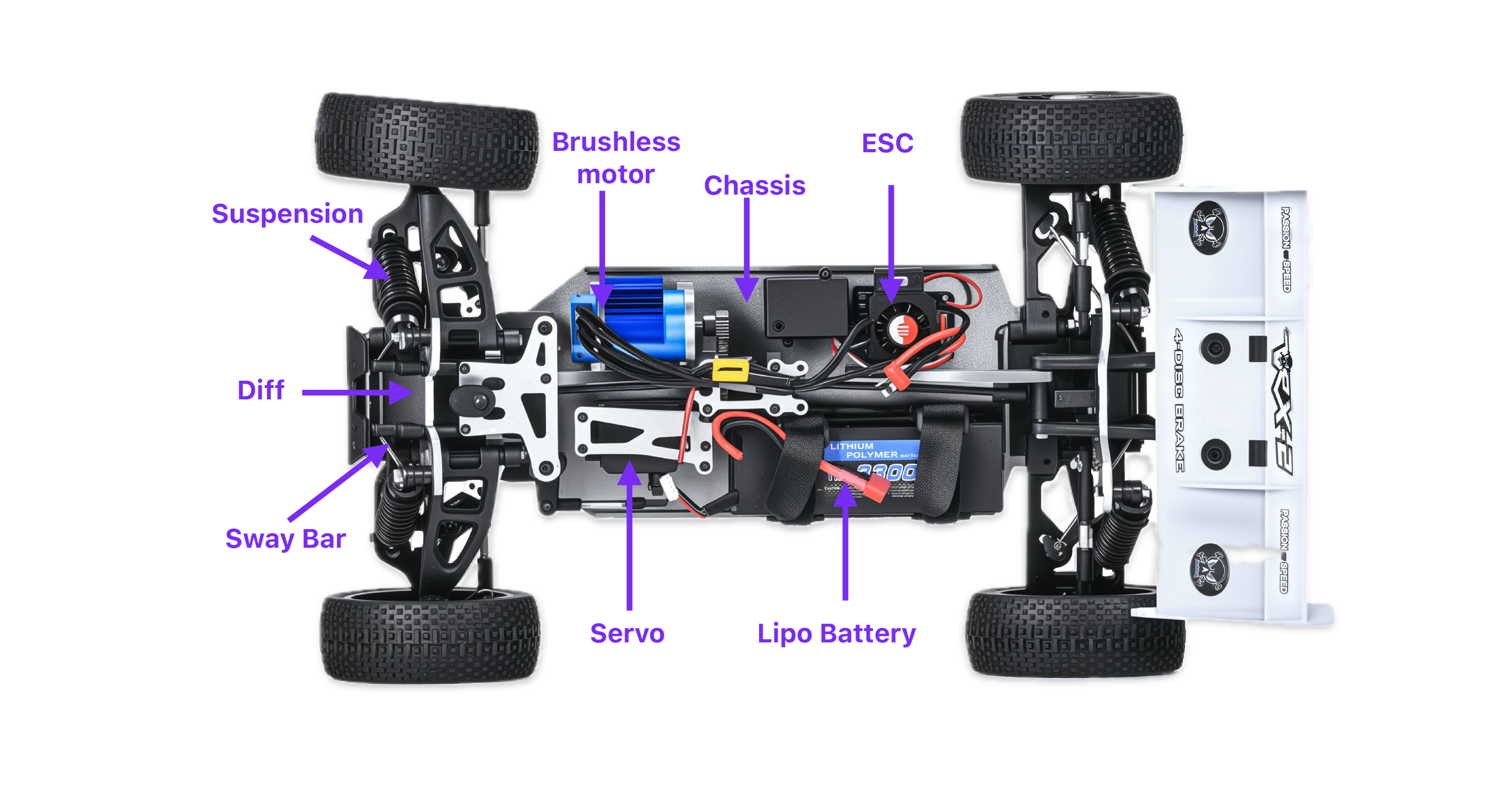RC Car Terminology Explained: A Beginner’s Glossary
If you are new to the exciting world of RC (radio-controlled) cars, chances are you’ve already come across a few words that sound confusing. Terms like “scale,” “torque,” or “ESC” might pop up in forums or product descriptions, leaving beginners scratching their heads.
To help you get started, we’ve prepared a beginner-friendly glossary of RC car terminology, using examples from VRX Racing models whenever possible. Bookmark this guide — it’s a quick way to understand the language of RC and feel more confident as you explore the hobby.
Basic RC Terms
RC (Radio Controlled):A car operated remotely using a transmitter. Sometimes called R/C or remote control. VRX Racing rc cars are normally equipped with 2.4GHz transmitter and receiver.
RTR (Ready to Run):A car that comes fully assembled and ready to use right out of the box after adding AA or AAA batteries to transmitter, like many VRX Racing models. Just add fuel (nitro) or charge the battery (electric).
Kit:An unassembled RC car that requires building or assembled rc chassis, normally need additional electronics.
Scale:Represents the size of the RC car compared to a full-sized vehicle. For example, a 1/8 VRX buggy is one-eighth the size of a real buggy.
Electronics & Power
ESC (Electronic Speed Controller):Controls the motor’s speed and direction in electric cars. Brushless VRX models use high-performance ESCs for efficiency and speed.
Servo:A small motor responsible for steering or throttle/brake control.
Brushless vs Brushed Motor:
• Brushed: Cheaper, good for beginners, slower speed;
• Brushless: Faster, more durable, and more efficient — found in many VRX performance cars.
LiPo Battery:Short for Lithium Polymer. Powerful, lightweight battery packs used in most modern RC cars, normally packed in a molded plastic case.
NiMH Battery:Nickel-Metal Hydride. A more beginner-friendly battery, heavier but safer than LiPo.
Mechanical & Chassis Parts
Chassis:The main frame of the RC car. VRX offers lightweight yet strong chassis for buggies, trucks, and crawlers.
Differential (Diff):Gears that allow wheels to rotate at different speeds, improving turning. Many VRX cars have adjustable diffs for fine-tuned performance.
Suspension:The system of shocks and springs that helps absorb bumps and maintain traction.
Sway Bar (Anti-Roll Bar):A bar that connects suspension arms to reduce body roll during turns. Found in racing models like the VRX-2 Nitro buggy, and optional sway bar system for VRX 1/10 buggy, touring and trucks.
Tread / Compound:Refers to tire pattern and rubber hardness. Different surfaces (dirt, grass, tarmac) require different tires.

Performance & Driving
Torque:The twisting force of a motor — higher torque means stronger acceleration.
Top Speed:The maximum speed an RC car can reach, often a highlight of VRX Racing models.
Handling:How well the car steers and responds to inputs, influenced by suspension, tires, and weight distribution.
Oversteer / Understeer:
•Oversteer: Rear wheels lose grip, causing the back to slide out.
•Understeer: Front wheels lose grip, causing the car to push wide in turns.
Nitro-Specific Terms
Nitro:Refers to cars powered by nitromethane fuel. They provide realistic engine sound and higher top speeds.
Glow Plug:The “spark plug” of a nitro engine — heats up to ignite fuel.
Break-In:The process of running a nitro engine gently at first to ensure long-term reliability.
Hobby Culture
Bashing:Driving your RC car for fun — jumps, stunts, and casual runs.
Racing:Organized competitive driving on tracks. VRX buggies and truggies are designed for this environment.
Crawler:RC cars built for off-road climbing and slow technical driving, focusing on torque instead of speed.
Final Thoughts
Learning RC terminology is the first step to becoming confident in the hobby. Whether you’re unboxing your first VRX Cobra, tuning a VRX-2 Nitro buggy, or just browsing parts, understanding these terms will help you make better choices and enjoy your car more.
At VRX Racing, we believe RC should be exciting and approachable. If you’re ready to put your new knowledge to use, check out our latest VRX models and start driving today!











